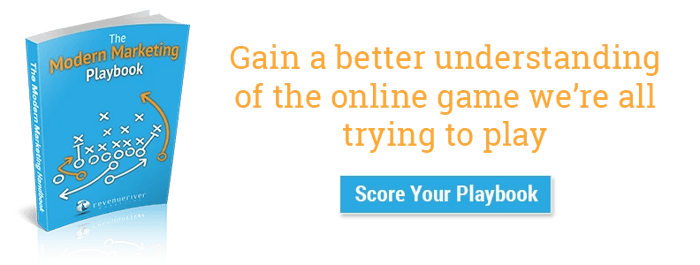If you’re looking to capture the attention of your audience in 2020, but don’t know where to start, these 12 key aspects of content and strategy will help establish a solid foundation, so you can move forward with your digital marketing campaigns.

Now, think back to the last digital marketing campaign that blew you off your feet. Maybe it was one that made you stop and think. Maybe it was one that made you laugh so hard you cried.Maybe it was one that made you realize you needed something you never even knew existed. No matter what it made you do or feel, the fact that you remembered it means that it was at least somewhat successful.
So how was that company able to connect with you so successfully? It certainly wasn’t just blind luck, you’re too sharp for that!
While I don’t know what the marketers responsible for your favorite digital campaign actually did, I can say with almost 100% certainty that they spent a large amount of time researching their market, analyzing different pieces of data and building out detailed strategies that helped them blow you away through flawless execution.
The fact of the matter is that running a successful digital marketing campaign takes a lot of time and energy, not only during its implementation but also during the build up to go-live.
1. Personas
Everyone knows that you should build out detailed personas before starting a campaign so I won’t waste much time here. If you don’t know your target market and the key players within it intimately, you’re not going to have a good time! Work with your sales team, senior marketing members and anyone else with experience working with your industry’s customers (customer service reps, store managers, etc.) to build out a detailed profile around their background, job roles, goals and challenges so that you can better create content that will connect with them.
Tips:
- Interview experts within your company. This will help you build a general idea of who you are targeting and how your product/service connects with them.
- Reach out to current customers for short, 30 minute interviews. Have a list of questions worked out beforehand and spend more time talking about them and their job/company vs. your product/service. This is where you will be able to build out a more well-rounded profile of a qualified persona and how your company can successfully win business.
- Reach out to prospects that your sales team recently lost (if possible). Run them through the same interview as above but try to focus a bit more of your time at the end of the interview collecting information on why they decided against your company. This will help you build out a better understanding of major objections your sales team faces.
Takeaways:
The more time you spend on this single aspect of your campaign buildout, the more likely you are to succeed. While a number of the other items on this list might lend themselves to less prep time and energy to create, personas require more and can make or break your overall campaign.
2. Competitive Analysis
To paraphrase Sun Tzu, “Know yourself and your enemy and you shall win 1,000 battles.” In a time where nearly every prospect compares multiple options online before making a purchasing decision, you can’t afford to ignore what your competition is doing with their digital efforts.
By knowing the ins and outs of all public areas of a competition’s marketing from social media to blogging to offer creation and more, you can better understand who they are targeting with their marketing, what content they are focusing on and where they have found the most success. Once you know this, you can better understand how you can and should position yourself on these different mediums to stay one step ahead of everyone else.
Tips:
- Find a solid list (about 5-7) of both direct and indirect competitors to analyze.
- For an overall look at your competition’s digital marketing efforts, use HubSpot’s Marketing Grader to see where everyone stands.
- Use the Alexa Toolbar to find yours and your competitors’ traffic rankings.
- Search your target keywords and note who comes up on the first page or above you in the results.
- List out what social media sites your competitors are on (they should promote which platforms they are on through their site on either their header, footer or contact page).
- Note how many followers your competitors have on each platform
- Note what content your competitors are sharing and how. Do they promote a lot of their own stuff or industry notes? What tone do take? How much engagement do they get from their followers?
- Search each of your competitors’ sites for a blog. If they have one look at how often they blog, what they are blogging about, and what kind of engagement they are receiving.
- Search each of your competitors’ sites for a resources page promoting any type of offer and try to download them (I know, it sounds sleazy, but get over it. They’re doing the same to you) to see whwat kinds content they produce, what are they doing well and what are they missing.
Takeaways:
The more you know about your competitors, what they’re doing and what they’re finding success with, the more information you will have to create a more advanced and successful campaign of your own.
3. Voice & Messaging
Understanding who your personas and competitors are is one thing. Understanding how to properly connect with those personas and differentiate yourself from your competition in a succinct manner is another. While your sales team may already know how to approach prospective customers in a way that connects to their goals and challenges while differentiating themselves from their competition, do you as a marketer know how to do the same with your content?
Taking the time to go through different exercises to help you verbalize and document how you can position your content to better connect with your personas and differentiate yourself from competitors will help you immensely when it comes to creating content to effectively convert qualified traffic into leads for your sales team.
Tips:
For each of your main personas, answer the following questions to fill in this very telling (slightly run-on) sentence: “We will target (Blank), specifically (Blank), who (blank). We (Blank) that (Blank) unlike (Blank).
- What type of companies (or consumers for B2C) are you targeting?
- Who is the decision maker within that group that you will focus your marketing efforts on?
- What are the major needs and challenges that this persona faces that your company sees as an opportunity to help with?
- How is your company’s solution categorized by this persona? If they had to describe your solution, how would they do it?
- What are the main benefits that this persona gets from your solution?
- How does your solution differentiate positively from your direct competitors? Indirect competitors?
Takeaways:
You almost certainly already know in your mind what your company’s voice and messaging are but having an idea and fully working it out on paper are two very different things. Spend the necessary time to perform a brain dump before organizing it with help from the sentence in the tips above and you will walk away with strong phrases that both you and your sales team can use moving forward.
4. Target Keywords
Successful inbound marketing and content creation campaigns require targeted search engine optimization strategies. Do you know what keywords your personas are using to search for your solution? Do you know which ones you have an opportunity to start ranking for? Having a detailed and focused list of relevant, attainable target keywords for you to optimize your content for is the best way to ensure that you are as effective and efficient as possible when it comes to both SEO and content creation.
Tips:
- Before you start listing off dozens of keywords on a page, narrow your initial list down to about 3 to 5 keyword that your client base would probably be searching. Put yourself in their shoes and try and think about what they would look for.
- Use either Google Adwords or HubSpot’s Keyword Tool for the actual research. Use the keywords you selected above to get related keyword suggestions, average monthly searches, and competition of a keyword. Make sure you track these keywords and numbers in a spreadsheet.
- Consider how many searches a keyword gets, and what the search results for a keyword look like. In the end, it is best practice to choose about 3-5 target keywords.
Takeaways:
Progress in improved page rankings takes a detailed and realistic strategy regarding the keywords you choose to target with your website and blog content. The more research time you spend uncovering the most relevant and attainable keywords, the more quickly you will be able to improve your search engine rankings and traffic.
5. Optimized Meta Data
Before you start taking your newly selected target keywords for a spin with blog articles and site page content, you should focus first on optimizing your meta data. Do you know what your page titles should include for both search engines and site visitors? What about your meta description? Have you considered your alt text and page URL’s? Knowing what on and off-page optimization areas to focus on when implementing new keywords is extremely important when it comes to optimizing your website for search engines.
Tips:
- Use Screaming Frog to compile a list of pages. Once this list is compiled, make sure to keep track of the links, Meta Titles, and Meta Descriptions.
- Meta Titles are meant to be an accurate description of a page’s content. It is a critical component since it creates value for the search results pages. The optimal page title length is about 50 to 60 characters, but stay around 55 characters to be safe.
- Meta Descriptions give a concise explanation (roughly 155 characters) of the contents of a webpage. It is most commonly used to give the user a preview snippet for a given page. Although they do not affect search engine rankings, they are extremely important to user clicks to the website.
Takeaways:
Creating a document that tracks your keywords and meta data decisions will allow you to ensure you are checking off all of the “SEO boxes” while making your life easy when it comes to tracking any and all keyword changes that may occur during your campaign. You might not be an SEO expert performing high level optimization techniques, but you will be able to at least cover some of your basic bases here.
6. Funnel Analysis & Offer Strategy
Inbound marketing helps generate leads through the promotion of pieces of free premium content. We all know that but what do you do when you already have a library of resources but are unsure who they are for and where they best fit in the buyer’s journey? You perform a funnel analysis of course!
Understanding what content you currently have live on your site, what assets you can potentially repurpose and convert into premium content and how you can best position them to convert, educate and nurture the right leads will then give you a much better idea of what content you will need to create moving forward in your campaign.
Tips:
- List out every piece of content that you currently have and connect specific offers to both personas and lifecycle stages.
- Create and prioritize a list of offers and pieces of premium content that you will need to either rework, repurpose or create in order to start filling any gaps found in the persona-buyer’s journey table.
Takeaways:
It can be very easy to want to immediately jump into creating a new ebook when starting an inbound marketing campaign or refocusing one already in progress but it’s not always the right option. Documenting and sorting the different assets that you currently have (either live on your site or ready to repurpose) will give you a much more strategic view of what needs to be created and when so that when it is time to create that new ebook, you’ll know who it should be for, how it should be laid out and what you should focus its content on.
7. Lead Management Strategy
While the generation of leads is a key milestone for inbound marketing, it’s not the end goal. Customer creation is. So how do you go from leads to customers? You manage them through various areas of your website and marketing automation to help move them through the buyer’s journey. Mapping out and detailing all of the different elements and tools at your disposal before you begin managing and nurturing leads is crucial when it comes to the overall success of a campaign.
Tips:
- Consider different ways in which you can help leads move through the buyer’s journey through automation
- Are you consolidating the number of forms you’re using in your campaign to reduce clutter and more easily connect form submissions with areas of the buyer’s journey?
- Do your forms ask questions that your sales team needs to know in order to qualify leads when they first fill out a form?
- Are you utilizing progressive profiling to collect added information from contact reconverting on your website?
- Are you using thank you pages over inline messages?
- Are you trying to push for reconversions on offers further down the funnel?
- Are you pushing for the next stage in the funnel (awareness to consideration)?
- Use Smart CTA’s to provide offers are the most relevant to this persona and where they likely are in the buyer’s journey
- Use Inline Personalization to personalize your site’s written content to better connect with the lead?
- Can you use smart content to make sure they find what they’re looking for on that page so that you can more quickly move them through the buyer’s journey?
- Do you know what your different personas need/want to see next in the different stages of the buyer’s journey? Can you create persona and lifecycle-specific workflows that will help automate the nurturing process?
Takeaways:
Lead management is much more than just nurturing workflows. The embarrassment of riches when it comes to the marketing automation tools at your disposal means that you can create a highly complex automated system that can better convert and nurture your database of leads in different ways at different times. The more time you spend mapping out and documenting how you can continue to push leads further through the buyer’s journey faster, the better off you’ll be once you turn the automation on.
8. Sales Handoff Strategy
Leads are great. Qualified leads are even better but sales ready leads? Those are the best. Inbound marketing helps generate these types of leads so that your company spends less time in the selling process but that doesn’t mean it can close the deal on its own. Your marketing needs sales just as much as your sales team needs your marketing.
Without sales, you as a marketer would have a whole list of sales ready leads and no experience or understanding of how to close the deal. Without your leads, your sales team would instead be spending too much time with unqualified leads through cold calling and prospecting. Still, as knowledgeable and experienced as sales may be, contacting and initiating a sale with a warm or hot inbound lead is different than contacting a cold lead.
If you have a sales team who are bought in on getting the most out of the leads your inbound marketing generates, mapping out the process of when, how and to who you will hand off leads as well as how they should be contacted will help you set the foundation for that oh so elusive “closed loop reporting” that your boss has been bugging you about for ages.
Tips:
- Who from marketing will be responsible for tracking and qualifying leads generated from inbound marketing efforts? Who from sales will be responsible for reviewing the leads initially handed off before contacting them?
- How will the leads be generated (what technology will marketing use)? How will the sales opportunities be tracked (what CRM/lead tracking technology will sales use)?
- Does every person connected to this process fully understand why it is important?
- Understand when sales wants to see leads come to them. Establish a clear set of instructions that will help marketing qualify leads based on these criteria so they can better handoff only qualified leads tosSales.
- Outline the handoff, contact and tracking processes
- Does sales have access to your marketing analytics and insights for the leads handed off? Do they know how to use the tool?
- Does sales know the “do’s and don’ts” of contacting inbound leads?
- How will both marketing and sales track the quality and progress of the prospects generated by inbound marketing?
Takeaways:
While inbound marketing is an incredibly powerful and productive form of lead generation if done properly, every connection between a company’s stakeholders needs to be thoroughly mapped out and signed off on.
Marketing needs to understand what sales is looking for, sales needs to understand how to use the information provided by marketing to the fullest, and key decision makers need to be able to see tangible proof that both sales and marketing are proving ROI through proper tracking and reporting. Until you cover these bases, you’ll never be able to fully defend inbound marketing from internal skeptics that might emerge later on in a campaign.
9. Email Strategy
Just because you’ve created offers that will convert visitors into leads and have built out nurturing workflows that will automate a portion of the education process for personas doesn’t mean that every lead you get will be qualified and ready to talk to sales by the time the workflow ends.
Different leads require different elements of marketing. Some may reach out to your company right when they’re ready to buy while others may take more time to completely understand and compare options, including you. For those leads that may fall in or closer to the latter, there is email marketing. Who will you target with your emails? What content will you share with them? How will you present that content? How often will you send it out? These are all great questions to know the answers to when it comes to building out a successful email marketing strategy.
Tips:
- Do you have a current database of contacts? Does that database meet CAN-SPAM requirements?
- Analyze the data to see what has shown success in the past so that you can work to replicate it in the future with your new strategy.
- Know who you will be emailing so you can tailor your content and voice.
- Know what you will want to generally share.
- Know how often you will want to send emails. Try to set up general timelines where you will want to send people 1 email during then. If it’s once a week, work through your email strategy to ensure that you avoid sending emails to people who have already received an email from you that week.
Takeaways:
Email marketing is not a standalone strategy. It is just one tool in a fully integrated marketing campaign that can and should connect to a number of different elements you create regularly. Knowing who you want to target with your sends, what you want to share with them and how often will help you create a simple, yet effective strategy that will lead to more database engagement and less unsubscribes and harsh email responses.
10. Social Media Strategy
According to LinkedIn, there is an overabundance of “Social Media Experts” yet few businesses really seem to be setting the social media world on fire. Social media marketing can be broken down into 3 areas; strategy, publishing and monitoring and engagement. What sets a good social campaign apart from a great one is the amount of time spent in the first area. Above all else, a social media campaign that knows who it’s targeting, the voice and persona it is portraying and what it is sharing will almost always find success.
Tips:
- Establish a baseline
- Analyze what your competitors are doing? Keep them in mind as your form your strategy moving forward.
- Find and monitor different resources for content. Follow the 10-4-1 rule: out of every 15 posts, 10 come from a third-party, 4 should come from your blog, and 1 should be an offer.
- Pick which social platforms are best for you. Don’t spread yourself too thin by creating a presence on every social media site there is.
- Create a publishing strategy that answers the following questions for every platform you’ve decided to target:
- Establish a monitoring and engagement strategy.
Takeaways:
Social media is much more than #ThrowbackThursdays and cat pictures. It’s about knowing who your target audience is, where they are on social media and what they want to see while there. Once you know that, the more detailed you are and the more prepared you can be for the various things social media throws at you, the more likely you are to be successful in building a strong fan base that you can then use to drive traffic and leads back to your website.
11. Blog Strategy & Editorial Calendar
It would seem that everyone and their mom is blogging nowadays but why is that? Would it be because more and more people are turning to search engines every day with questions that blogs can answer? Is it because blogs help establish and showcase industry thought leadership? Is it because blogs can act as gateways to convert highly qualified visitors into leads? Yes. To all of them.
While there are numerous benefits to blogging, the reality is that the secret is out when it comes to business blogging and as competition rises for content creation on the various frequently asked questions and topics surrounding your industry you will need a strong strategy to help you stand out in the pack.
Tips:
- Review your current strategy and establish a baseline.
- Analyze what your competitors are doing. Keep them in mind as your form your strategy moving forward.
- Spend time reviewing your personas and utilize what you know about their goals and challenges to craft topics as well as voice and messaging that will best connect with them.
- Create a list of keywords you would like to start ranking for. Keep these keywords in mind when creating and optimizing articles.
- Create a list of relevant long tail keywords and continually add to it as you begin writing. Use Google’s “suggested searches” at the bottom of results to inspire new topic ideas.
- Get buy-in from subject matter experts. Unless you’re a “lifer” in your industry with decades of experience, you most likely are not going to be able to write on every topic your personas are interested in or at least not to the level needed.
- Make an appointment with yourself and keep it. Blogging is one of the easiest things to push, but it has continually proven to be one of the most effective areas of inbound marketing when it comes to traffic and lead generation and you need to make sure you continually churn out fresh, quality content on a regular basis.
Takeaways:
As blogging becomes even more popular in what is now an already saturated environment for content, the action of actually blogging takes a back seat to strategy and topic generation which is what all the great blogs up until this point have already been doing. Understanding who you’re targeting, what they’re looking for online and how you can get the best information live on your blog on a regular basis is crucial when it comes to creating a blog strategy that will actually work.
12. SMART Goals
There’s no point in implementing an inbound marketing campaign (or any other marketing campaign) unless you have plans for growth. And while starting off with a new campaign is great, you need to be able to not only track its success but show that it is (or is trending toward) bringing some sort of return on investment back to the company. While goal setting is one of the hardest things to do properly in a marketing campaign, a genuine SMART goal makes all the difference when it comes to measuring the success of a campaign through reporting.
Tips:
- All inbound campaigns should at least have goals set for website traffic, lead generation, qualified lead generation and customer generation.
- When finalizing goals, always run every iteration through the SMART framework. Is it specific? Is it measurable? Is it attainable? Is it relevant? Is it time-bound?
- Once goals are set and all major stakeholders have signed off on them, establish a schedule for reporting on these goals to ensure visibility and accountability of all parties throughout the campaign.
Takeaways:
Everyone in business is (or should be) held accountable for the results they generate. If you are responsible for the success of your marketing, you must take the time to create SMART goals that everyone involved with your campaign knows, understands and accepts before you move forward with any other marketing actions. Only once stakeholders have signed off on them and key members have bought into them will you be able to properly use these goals to guide the marketing actions you’ve mapped out in all the others strategies above.
Wow, That Was a Lot …
Now that you’ve read through all 12 building blocks, think back to your favorite digital marketing campaign. Try to envision what each building block would have looked like as their marketing team came closer to winning you as a client.
Marketing often gets a bad rap for being nothing but creative types who spend little time on research, analysis and strategy build out. In reality, some of the best and most successful marketing campaigns had multiple hundreds of man hours dedicated to nothing but strategy well before any prospect got a glimpse of the final product.
If you’re looking to take your marketing to the next level, consider these 12 foundational building blocks before starting your next campaign and see where your creativity goes from there.




![Lead Generation Content: Top Types to Use in 2023 [Data + Expert Tips]](https://blog.hubspot.com/hubfs/lead%20generation%20content.webp)
![Why You Still Need SMS Marketing & How to Get Started [+Data]](https://blog.hubspot.com/hubfs/Why-you-need-sms-marketing.webp)
![Gated Content: What Marketers Need to Know [+Examples]](https://blog.hubspot.com/hubfs/UNGated%20Content.png)


![What Is Demand Generation? [FAQs]](https://blog.hubspot.com/hubfs/what-is-demand-generation.jpeg)

